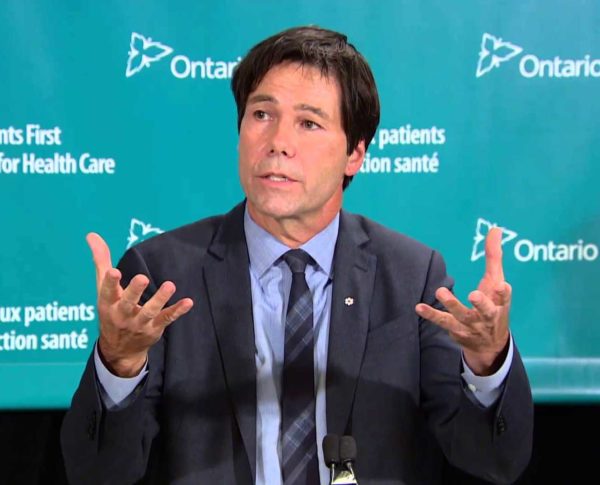
It was recently drawn to my attention that there is an Infographic on “The Elderly and The World Wide Web” which explains the U.S. seniors’ relationship with digital technology and how they increasingly rely on the internet to seek healthcare solutions. The infographic at https://medalerthelp.org/elderly-the-world-wide-web/ was developed by medalerthelp.org, a U.S. website that helps seniors differentiate and choose among the many medical alert systems that are available to them in the marketplace. The infographic is very creative in terms of colourful and user-friendly graphics illustrating evidence-based research and content.
Key findings, drawn from different reliable sources including the AARP, Pew Research, and other surveys, include the following:
- Studies show that educated seniors with higher incomes tend to use the internet at higher rates
- 82 percent of boomers/seniors use search engines to gather information on topics of interest
- Baby boomers spend about 27 hours per week online
- 70 percent of internet users aged 65+ use the internet on a typical day
- 66 percent of information accessed by the mature population online is access to news and weather; 57 percent of usage is related to shopping; 44 percent is accessing food information and 43 percent is to play games and related activities
- 71 percent of older internet users go online everyday or almost everyday
- 11 percent go online three to five times a week
- 25 percent of grandparents use email to communicate with their families; 75 percent of seniors use the internet to communicate with friends and family; and 55 percent of seniors follow a group or organization on social networks
- 40 percent of seniors are viewing online videos to stay up-to-date with the latest news
- 53 percent of seniors use the internet to learn about healthcare or medical issues
- 54 percent of seniors watch online video for entertainment
- 26 percent of the mature population say that mental sharpness is an extremely important reason for playing games and 50 percent say it is very important
The top three internet usage by category among American boomers and seniors are: getting health or medical information (66 percent); visit a local, state or federal website (58 percent) and doing banking or financial activities (55 percent).
Other interesting facts include 63 percent of 50 to 59-year-old Americans now access TV content via the internet and baby boomers are 19 percent more likely to share content on Facebook compared to any other generation.
In Canada, a recent study from Media Technology Monitor (MTM) also found that boomers and seniors are enthusiastically consuming content via digital media. Smartphones have found a comfortable home with the boomer demographic – 78 percent of younger boomers (aged 51 to 60) and 66 percent of older boomers (aged 61 to 71) report ownership. Younger boomers are more likely to own tablets and a healthy number of the younger demographic also have gaming consoles.
Canadian boomers’ desktop computer usage is similar to our American counterparts (56 percent vs 58 percent among American boomers). They also don’t appear as interested in wearable technology. The vast majority of older Canadian boomers still have a TV subscription (86 percent), compared to 91 percent of seniors over 72 years old and 65 percent of millennials. While 21 percent of millennials say they have no TV subscriptions but watch that content online, only five percent of young boomers say they have done so. Meanwhile, 21 percent of younger boomers are very or somewhat likely to cancel that subscription.
Around 55 percent of older boomers watch TV exclusively on a traditional TV set, and only one in 20 boomers reported watching TV exclusively online. Seniors over 72 years of age demonstrate the stronger affinity for traditional TV, radio and news platforms. More than nine out of 10 pay for conventional TV, nearly half have newspaper subscriptions and 83 percent report heavy viewing of news specialty channels.
Device use is also predictably lower among older Canadians – 18 percent say they access the internet via a TV set and 24 percent own a smart TV. Another 68 percent own a computer, with laptops surprisingly edging out desktops (47 percent vs 44 percent). Smartphone ownership tops out at 36 percent of seniors aged 72 and above, with tablets appearing in roughly as many senior households (33 percent). Another 25 percent of seniors report owning a “basic” or feature phone. Of the 91 percent of seniors who have a TV subscription, 11 percent were identified as being very or somewhat likely to cut the cord.
According to a TD Bank Group survey titled “Too Shy To DYI,” Canada’s baby boomers are comfortable with the Internet for most things, but a glaring exception is investing online through discount brokerages.
Almost four in five baby boomers (79 percent) use the Internet for banking, but only a meagre 16 percent are online do-it-yourself (DYI) investors, say the poll of 2,000 Canadian adults conducted in July 2017. TD Direct Investing said this behaviour can be attributed to the fact that many say they are unfamiliar or uncomfortable with online investing tools. The survey also found that boomers would invest online if they had a human being to hold their hands in the beginning and ask them investing questions.
According to a Financial Post article, the issue isn’t so much technological savvy as confidence and knowledge about investing. It’s obvious that baby boomers have already integrated technology into their lives in a variety of forms. They can set up a broker account or robo account and transfer money in and out. But many are confused, intimidated or fearful about making the right choices from the thousands of investments available to them.
TD found that 50 percent of boomers spend at least 15 hours a week on the internet, only a tad less than 58 percent for millennials. Ninety-four percent of Canadian boomers use the Web because it’s convenient and 84 percent find it easy. Seventy-seven percent use the Internet to read news online, 66 percent to shop via Amazon or its rivals, and 64 percent stay connected with friends and family through social media such as Facebook or Twitter.
The main reason for low boomer use of online investing is lack of investment knowledge. TD says 79 percent of those surveyed don’t manage their money online because they simply don’t know enough about investing, while 22 percent say they don’t have enough time to invest on their own.
Unfortunately, when compared to our American counterparts, Canadian boomers are less likely to adopt digital health technology, according to a 2017 study commissioned by Telus Health. According to the survey, Canadians in the boomer (aged 52+) and senior categories (aged 71+) reported that they are most likely to access a healthcare provider (78 percent). However, while 58 percent in this demographic agree that digital health tools would help them connect with their healthcare provider, this group ranks the lowest to use them (20 percent). Further, Canadians aged 52 years and over are 10 percent less likely than younger generations to agree that digital technology empowers them to take control of their health.
While these findings highlight the need to educate and engage all Canadians on the role of digital health technologies, a supplementary survey of Canadian healthcare providers uncovered tremendous support for the role that digital technology plays in staying connected with patients and other healthcare providers. Whether it’s to book appointments or send an alert when medications are low, three in four healthcare providers report using digital technologies to communicate with patients. Of those healthcare providers surveyed, 80 percent reported using digital technology to communicate with other healthcare professionals; and six in 10 believe that this integrated health team interaction improves patients’ overall wellness.
It looks like that although Canadian boomers and seniors are increasingly comfortable and versatile with technology, they might need more education on the important role digital solutions can play in their financial investments as well as their overall health and wellness.
]]>

The big hoopla about Canada’s legalization of cannabis has finally subsided a bit. I believe that very little will change in terms of behaviour. According to Statistics Canada, 4.9 million of Canadians already consumed $5.7-billion worth of cannabis in various forms, both medical and non-medical, last year. Boomers, in particular, are no strangers to cannabis. From their Woodstock days, boomers have smoked joints at concerts and college parties. Now that they are aging, baby boomers are seeking cannabis more as a pain relief rather than for recreational purposes.
Investor’s Business Daily cited a report from the marijuana delivery platform Eaze, which operated in California where recreational cannabis is also legal, which found that monthly marijuana spending last year among its thousands of users increased to US$179-$189 from US$125-$152 in 2016. An average-size pot dispensary draws more average yearly sales per square foot than a Whole Foods, and slightly less than a Costco, research from Cowen and Marijuana Business Daily has shown.
One reason why investors seem to have confidence in cannabis stocks is because a few alcohol companies, such as Molson and Constellation Brands, have taken on minority stakes in Canadian cannabis companies. Alcohol and tobacco companies are actually taking heed of the cannabis market because it directly affects their own businesses. As of 2016, the monthly rate of binge drinking was around 13 percent lower in the U.S. states that had fully legalized pot than in states where it was illegal, according to research from Cowen.
Tobacco companies may also look into having a share of the cannabis market. Vaping is one of the fastest-growing segments in both nicotine and cannabis. According to a Cowen analyst, upon federal legalization, big tobacco could leverage its expertise to explore the legal cannabis market through vapor. It was estimated that big tobacco companies could nearly double their underlying growth via the cannabis market and grab around a fifth of the overall share of the marijuana industry by 2030 in a fully-legal U.S. market. In the meantime, Canada presents a big opportunity for both the tobacco and alcohol industries.
Because the legalization of cannabis is so new in Canada, the marketing of pot has become a major challenge as well as a huge opportunity for marketing companies and law firms. Building brand recognition for cannabis brands is not easy. The Canadian government has rightly imposed hefty restrictions on cannabis companies’ ability to advertise. They cannot use endorsements from celebrities or other well-known individuals or offer up customer testimonials or product reviews. They also cannot advertise cannabis as part of an attractive lifestyle. Anything that could be appealing to young people or visible in media that could reach young people, is banned. That means no billboards and TV commercials.
Many marketers see the evolution of the cannabis industry as similar to the alcohol industry after Prohibition. But as the Federal Health Minister has pointed out, the Liberal government will measure the success of pot legalization in this country by looking at evidence that youth consumption via the black market is on a downward trend. Until the government sees that youth consumption is not rising as a result of legalization, that people are consuming responsibly and that the legal market is leading to a reduction in illicit sales, restrictions about the marketing of cannabis will continue to be very strict.
Cannabis can, of course, be harmful when used irresponsibly, but our nation has a much bigger health crisis in opioid overdoses than the potential harm of smoking weed. To boomers, cannabis therapy can relieve PTSDs and physical pain. We should be proud of our country who is moving forward when the whole world is going backward. After 96 years, marijuana prohibition has finally ended. As the second country, after Uruguay (where users must provide their fingerprints in order to buy pot), and the first major Western country to legalize cannabis and allow its undocumented use, Canada is showing the world how a mature country is handling this in a safe, disciplined and responsible way. The whole world is watching!
]]>
Photo Credit : Huffington Post
Two recent celebrity suicides sparked off a lot of discussions about mental health issues. Both Kate Spade and Anthony Bourdain were unlikely victims of suicides because they appeared happy, perky and financially sound. Yet, both of them had suffered from depression and addiction for a long time and they both chose to hang themselves to end their “misery”.
Their deaths coincided with a new report released last week by the U.S. Centers for Disease Control and Prevention. Suicide rates rose in all but one state between 1999 and 2016, with increases seen across age, gender, race and ethnicity. In more than half of all deaths in 27 states, the people had no known mental health condition when they ended their lives.
Increasingly, suicide is being viewed not only as a mental health problem, but a public health one. Nearly 45,000 suicides occurred in the U.S. in 2016 – more than twice the number of homicides – making it the 10th leading cause of death. Among people aged 15 to 34, suicide is the second leading cause of death.
In Canada, the situation is equally stark. According to The Globe and Mail, about 3,000 people worldwide die by suicide every day – including 125 in the United States and 10 in Canada. Statistics Canada figures indicated that in 2009, there were 3,890 suicides in Canada, a rate of 11.5 per 100,000 people. The suicidal rate for males was three times higher than the rate for females (17.9 versus 5.3 per 100,000). Although suicide deaths affect almost all age groups, those aged 40 to 59 had the highest rates. Married people had a lower suicide rate than those who were single, divorced or widowed.
For seniors, the situation is even worse. Over 10 seniors (60+) die by suicide every week in Canada and approximately 1,000 older adults are admitted to Canadian hospitals each year as a consequence of intentional self-harm. Seniors are, in fact, one of the most at-risk demographic when it comes to suicide. Of that demographic, men over the age of 65+ are the most at risk.
For older adults, in particular, depression is the most common mental health problem due to loss of family and friends, debilitating sicknesses or disease, and a loss of independence and the isolation that can ensue. In an interview with CTV, Dr. Leon Kagan, the director of Geriatric Psychiatry at the University of Alberta, suggests that isolation is a key factor in driving thoughts of suicide among seniors. “These older individuals are having everything taken away from them in terms of their work, their health, their families and finding their role diminished. For some of them, taking their own lives seem to be the only option that they have.”
But suicide rates can be reduced by confronting and talking about depression and offering help to those suffering from prolonged sadness. The Globe and Mail pointed out one of the saddest aspects of the stories about Kate Spade was the revelation that she hesitated to get help for her crushing depression because she worried it would hurt her brand, built on cheerful and brightly-coloured handbags and clothes. Depression is often hidden behind a front of happiness. There is also the stigma of mental illness – victims and family members often feel ashamed of talking openly about their condition. Although this stigma has gradually been fading, the greatest barrier for many is not fear of seeking treatment, but access to treatment.
In Canada, the waits for psychiatric care are disturbingly long. The barriers to accessing psychological services tend to be financial – psychotherapy is not covered by publicly-funded health insurance and private insurance tends to offer limited coverage. The media should tell people that mental illnesses are treatable and instead of glorifying celebrity suicides, they should report on cases in which mentally-depressed patients have recovered by seeking proper treatment. Many people who consider or attempt suicide do get help and they get better.
For older adults, the magnitude of death by suicide is a fact that is under-reported and needs to be discussed more openly so that caregivers and families of older adults can better understand the warning signs of depression and suicide and offer up the help they need.
According to the Canadian Association of Suicide Prevention (CASP), the events that trigger suicide thoughts in seniors are unique and can differ from those that might lead to depression or mental health struggles within a younger demographic. While sadness is the most obvious system of depression, depression can actually exist without sadness.
The CASP website indicated that if an older adult is exuding the following traits, they might be at risk for depression or suicide:
- Fatigue (difficulty falling asleep)
- Loss of interest in hobbies or pleasurable pastimes
- Social withdrawal and isolation
- Loss of self-worth
- Weight loss or loss of appetite
- Fixation on death
- Recent passing of a loved one
- Lingering health problems
The most useful way to offer help to anybody suffering from depression is to to tell them that they are not alone. Let them know that there are people who want to help, and that with the right support, they can find hope again. In addition to having an open conversation about depression and suicide, you can suggest a change in routine by encouraging the people at risk to be involved in activities within their community. Some people need to talk regularly about how they feel in order to shift perspectives, so you can help them out by doing the research on professionals to talk to and, if possible, offer to drive them to and from appointments. When someone knows that others need them to live, it can discourage them from taking their own life. You can organize family time whenever possible and surround the person at risk with love, affection and reassurance that they are not alone.
We also need to tackle the societal problems that can fuel and trigger mental illness and suicidal thoughts – sexual and physical abuse, bullying, trauma, isolation, poverty and more. Anyone can help and little gestures matter. There is hope and we CAN reduce suicide rates if we try harder.
]]>

Photo Credit: Canadian Career College
The New York Times reported recently that according to the Bureau of Labor Statistics analysis, among the 10 occupations expected to grow the most through 2026, personal care and home-health aides will require the most new workers, with 1.2 million new positions between them. About 10,000 baby boomers turn 65 every day, and more than half will need long-term care, according to the Pew Research Center.
Home-care agencies and elderly-care facilities are apparently struggling to recruit. Last year, 26 percent of personal-care aides and home-health aides in the U.S. were foreign born, according to the Conference Board. In New York, 62 percent of home aides were foreign born. In California, Massachusetts and New Jersey, foreigners represented nearly half of them. That is why a recent bill introduced by the Republicans and supported by the White House to create a point system for admission based on factors including education, English skills and job offers in the U.S., which would cut the overall number of green cards awarded each year by half, worries employers who rely on immigrant labour. Senior-care agencies particularly are worried because many are dependent on Medicaid and Medicare and so cannot easily raise wages to make their jobs more attractive to native-born workers. According to a Washington think-tank, the Center for Global Development, the U.S. needs far more new low-skilled workers than high-skilled workers. Only three of the 10 occupations expected to grow in demand require university degrees, all of them digital or data-focused: software developers, statisticians and mathematicians.
In Ontario, Canada, to meet the increasing demand for home care, the role of personal support workers (PSWs) is shifting from providing primarily personal and supportive care to include care activities previously provided by regulated health professionals (RHPs). Findings from a recent review of home-care service user charts in Ontario, Canada, indicate that normally, PSWs provide personal and supportive care commensurate with their training. However, in approximately one quarter of care plans reviewed, PSWs also completed more complex-care activities transferred to them by RHPs. Service users receiving transferred care were older and had higher levels of cognitive and functional impairment. As the population ages in Ontario, the demand for PSWs performing more complex tasks is only going to increase substantially.
That is why the Liberal government in Ontario is creating a new provincial agency called Personal Support Services Ontario that could eventually serve hundreds of thousands of patients in the province. CBC News reported that this move would mean PSWs will become provincial employees. It also has the potential to take a significant portion of the $2.5 billion in annual publicly-funded home care away from the for-profit and not-for-profit agencies currently providing it. The government says creating the agency would give home-care clients more choice in selecting a PSW and more control in determining their care schedule. As with other new government policies, there are supporters and naysayers.
The plan is laid out in a Ministry of Health document dated October 2017 which says Personal Support Services Ontario will be created soon to deliver home care in the spring. It also says the new provincial agency will directly recruit, screen and employ PSWs. Some 729,000 people received provincially-funded home care services in 2015-16. Nearly all of that care was delivered by nurses and PSWs employed by outside agencies, both for-profit and not-for-profit. The document says that the new provincial agency would initially provide PSWs to clients who need a high volume of home care – at least 14 hours per week.
We all know that in 2015, the auditor general criticized the regional agencies that coordinated home-care services, the Community Care Access Centres (CCACs). Critics also questioned how much of the CCAC budget went into administration instead of home care and found that nurses employed directly by the CCACs were paid more than those employed by agencies. This all prompted the government to eventually dismantle the CCACs effective as of April last year.
While the creation of Personal Support Services Ontario seems to be a good idea, more time and work should be dedicated to providing better training to the PSWs and improving the efficiency of home-care delivery. We do not need a new provincial agency to reinvent the wheel and recreating a similar bureaucracy to the CCACs while thousands of seniors continue to be on the waiting list for the services of PSWs. With the upcoming provincial leadership elections, it would be interesting to see how the Wynne government would tackle this important new policy.
]]>
I have more than once advocated the support of a national pharmacare program for Canada on this blog. It, therefore, gave me hope when the Trudeau Government recently plucked Ontario’s Health Minister, Eric Hoskins, to chair a special Federal Commission to look into the introduction of a national pharmacare program for the nation. Yesterday, Ontario Premier Kathleen Wynne said that her budget will include a blueprint to expand Ontario’s pharmacare program, known as OHIP-plus, which currently covers people up to the age of 25. She said she will move forward without the federal government for now and beginning August 1, 2019, seniors will no longer have to pay a deductible or co-payment for more than 4,400 prescription drugs.
Skeptics immediately said that both the Federal and Ontario Liberal Governments made these promises to win votes in the upcoming elections. For the highly unpopular Kathleen Wynne, in particular, this is obviously a campaign promise to woo the votes of the boomer and senior populations. She says the program will cost $575 million a year when it is fully operational in 2020-21. Drugs covered in the program include medications for cholesterol, hypertension, diabetes and asthma. Campaign promises can be broken but this latest announcement has won my vote.
Health care ranks highly among voter concerns in national polls, so it did not surprise me when Finance Minister Bill Morneau introduced the feasibility study of a national pharmacare program when he unveiled the Federal budget last month. The budget announced the creation of an advisory council, headed by Dr. Eric Hoskins, that would investigate whether public health-insurance plans could be expanded to cover prescription drugs. A national pharmacare plan had been previously proposed by the New Democratic Party (NDP).
The appointment of Dr. Hoskins, in itself, is already a step in the right direction. Dr. Hoskins, while in office as Ontario’s Health Minister, has always been a strong advocate for a national pharmacare program. In his new role, he will study the options, their costs, explain the trade-offs and determine which is the most feasible. Currently, about 26 million Canadians have private drug benefits, largely through employers. There are 102 public drug insurance programs, but that still leaves 700,000 people with no drug coverage, and an estimated 3.6 million with inadequate coverage, according to the Parliamentary Budget Officer.
A national pharmacare plan could save anywhere from $4 billion to $11 billion on the $28.5-billion prescription drug bill (from 2015). These savings could come from joint buying, more strictly regulating drug prices, more aggressive use of generics, and limiting the list of drugs that are covered. The Globe and Mail reported that while a single, national plan would theoretically save money on drug purchases, it would also mean a large-scale shifting of costs from the private sector to the public sector. The single biggest obstacle to pharmacare is the unwillingness of federal, provincial and territorial governments to absorb those costs and then increase taxes to pay the bill.
National pharmacare means insuring that every Canadian has access to necessary prescription drugs regardless of ability to pay. This philosophy has very few detractors, but there are many technical, financial and political impediments. But the appointment of Dr. Hoskins to chair the advisory council suggested the government’s seriousness about this initiative. It is well known that Dr. Hoskins, a physician himself, is a long-time proponent of an ambitious national pharmacare program. He has publicly backed that the best way of doing pharmacare is to throw out the system we currently have. The basic idea is that medically necessary drugs would be covered under the Canada Health Act and provided by provincial health plans for everybody, including those who now have private insurance. The federal government’s bulk-buying power would drive down prices for these new plans. People who felt the public coverage was inadequate could buy supplementary insurance on the private market, just like they can under medicare.
Skeptics and the Opposition are already criticizing the Trudeau government for paying lip service. But given Dr. Hoskins’s credentials and track record, and the timing of the Federal elections next year, it will only work to the Liberals’ advantage to devise a fiscally-responsible national pharmacare plan that would work.
Judging from the latest national polls, the Federal Government seems to be on the right track. A new Nanos Research poll that surveyed 1,000 Canadian adults by phone and online between March 7 and March 12, after the Liberals tabled their third federal budget on February 27, indicated that Canadians support the idea of public health insurance that covers prescription drugs. But they don’t like running deficits nor do they want new taxes to pay for the programs. But Canadians cannot have their cake and eat it too! How will the national pharmacare program be paid for otherwise? The NDPs have not come up with a good idea for financing this program either. So we should let Dr. Hoskins do his job and come up with a sensible plan. In Canada, we have had public hospital insurance since 1957, and public insurance for physicians since 1966. It is about time that we see another large-scale national health initiative on the horizon.
]]>